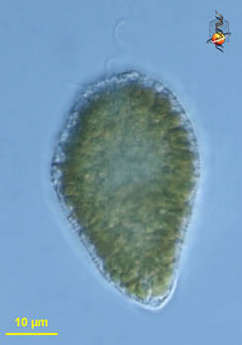Other Algae
Although dinoflagellates, diatoms, and cyanobacteria typically dominate planktonic algae communities of Florida's coastal environments, a number of other algae groups are commonly encountered and can even form blooms, including green algae (chlorophytes), cryptophytes, chrysophytes, euglenophytes, raphidophytes, and haptophytes. The coastal planktonic species within these taxonomic groups usually come in the form of relatively small ( < 25µm cell size), flagellated single cells or small colonies. Many species are acceptable food items for bivalves and can even be highly nutritious due to high lipid content. Some of these species are used by aquaculturists as feed for rearing commercially important shellfish and larval stages of fish. Some other species are potentially harmful in bloom concentrations. For example, some small flagellated haptophytes (Prymnesium spp. and Chrysochromulina spp.) have been implicated in mass mortalities of fish. Similarly, the raphidophyte, Chatonella spp., has been linked to fish mortalities. However, these potentially harmful species have not been linked to human health problems.
Common Species:
Below you will find a list of example "other" phytoplankton species. When you click on a species in the list, you will find a biographical sketch with information about what the species looks like, where and how often we found it in our study (see Sampling Locations for sampling dates and locations), and the potential "good" and "bad" effects on clams. Most species have the potential to harm clams if they form dense blooms; however, the "good" and "bad" categories on this page refer to the acceptability of individual cells as food items.
Euglena spp.
Found in: Indian River and Suwannee Sound
Site(s): Sebastian DE;GJ;PI;HB;PR;SR
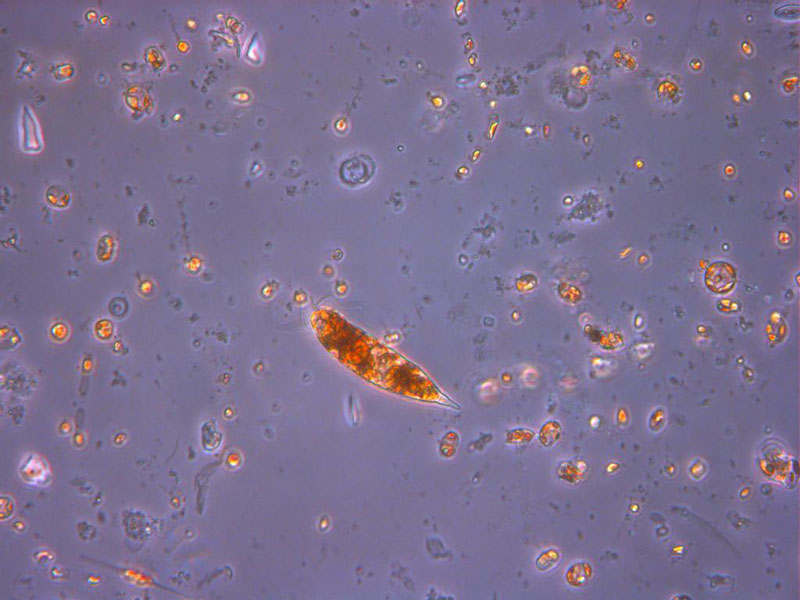
Eutreptia spp.
Found in: Indian River and Suwannee Sound
Site(s): Sebastian DE;GJ;PI;HB;PR;SR
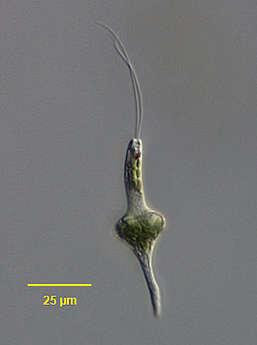
small spherical green algae
Found in: Indian River and Suwannee Sound
Site(s): Sebastian DE;HB;SR
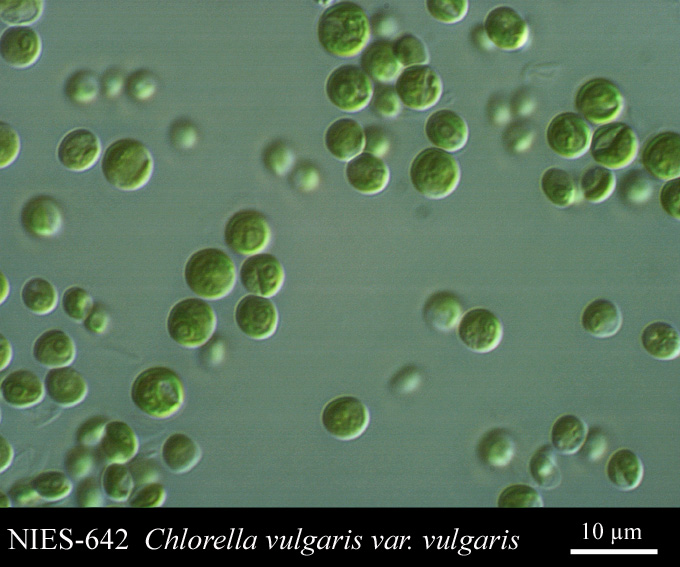
Scenedesmus spp.
Found in: Indian River and Suwannee Sound
Site(s): Sebastian SR
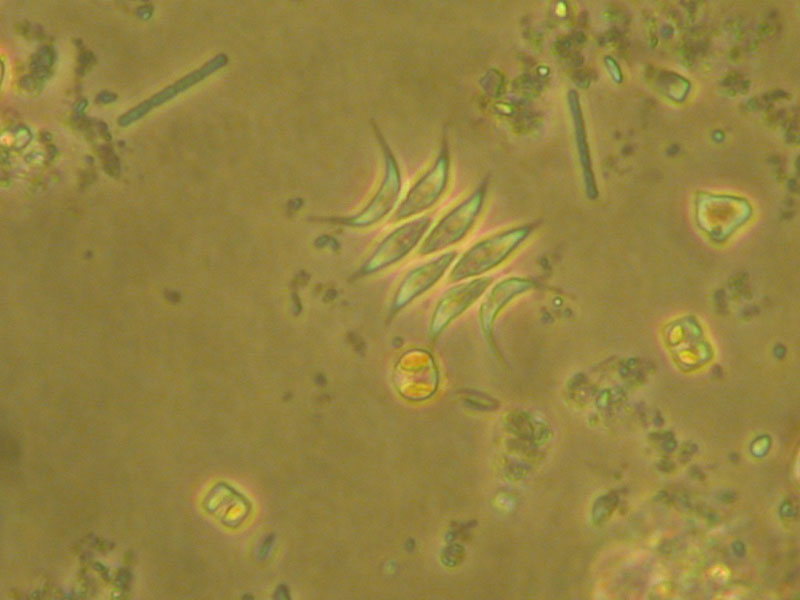
Pyramimonas spp.
Found in: Indian River and Suwannee Sound
Site(s): Sebastian DE;GJ;PI;HB;PR;SR
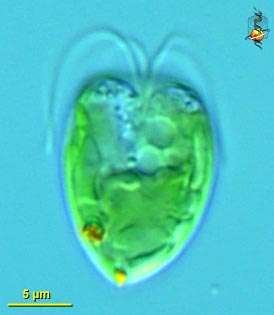
Chattonella subsalsa
Found in: Indian River
Site(s): Sebastian
